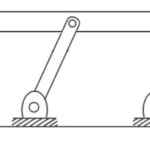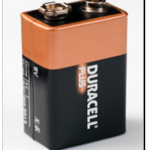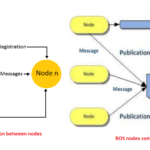The Robotics Education & Competition (REC) Foundation and the Dallas Sports Commission recently announced that the REC Foundation’s VEX Robotics World Championship will return to Dallas from 2021 through 2024.
The REC Foundation’s VEX Robotics World Championship — which the Guinness Book of World Records maintains is the largest robotics tournament in the world — is an annual, week-long event celebrating hands-on STEM education. STEM is a curriculum-based, interdisciplinary approach to education in four specific disciplines: science, technology, engineering, and mathematics.
 “STEM learning is part of our DNA in Dallas, and the extensive STEM and robotics association locally is not just necessary in our schools but also recruiting companies, jobs, and workforce to the Dallas region,” said Monica Paul, the Executive Director of the Dallas Sports Commission.
“STEM learning is part of our DNA in Dallas, and the extensive STEM and robotics association locally is not just necessary in our schools but also recruiting companies, jobs, and workforce to the Dallas region,” said Monica Paul, the Executive Director of the Dallas Sports Commission.
The VEX Robotics event hosts the top international robotics teams, which compete in problem-solving and innovation challenges. Typically, the event hosts more than 30,000 students, who compete in teams and in several different games using robots built from VEX Robotics parts.
Dallas last hosted the VEX Robotics World Championship in 2009 and 2010.
“After a thorough search for cities to receive the World’s Largest Robotics Competition, we could not be glad to bring this event back to Dallas in 2021,” said Dan Mantz, CEO of REC Foundation. “Our home office is homed in Texas just outside of Dallas, so we understand first-hand how empowered the city is to innovation, STEM education, and the ultimate workforce.”
The Dallas Sports Commission was instrumental in REC Foundation’s choice to come back to Dallas. “We are proud to collaborate with the Dallas Sports Commission to produce the competition to Dallas,” said Mantz. “When choosing on a location, we were very overwhelmed by Dallas Sports Commission’s vision for the event, as well as its team’s dedication to helping us grow the event and the city’s commitment to STEM.”
The REC Foundation’s purpose is to increase student interest and engagement in science, technology, engineering, and mathematics by involving students in affordable, hands-on, and sustainable robotics engineering programs.
The VEX Robotics World Championship displays students’ technical skills and achievements through the following programs:
1. VEX IQ Challenge (open to elementary and middle school students)
2. VEX Robotics Competition (open to middle school and high school students)
3. VEX U (open to college and university students)
The REC Foundation and VEX Robotics also encourage teamwork, collaboration, and diversity within the STEM community through programs such as Girl Powered. The Girl Powered initiative offers tools and support to students and mentors to promote female involvement in STEM and build an environment where students’ confidence and techniques can flourish.
Here are a few of the benefits of the program:
- VEX Robotics is a provider of educational and competitive robotics goods to schools, universities, and robotics teams around the globe.
- The VEX IQ and VEX EDR product lines span elementary, intermediate, and high schools with accessible, scalable, and affordable robotics resolutions.
- Beyond science and engineering policies, a VEX Robotics project encourages teamwork, management, and problem-solving among groups.
- The program allows educators to quickly customize projects to meet the level of students’ abilities as they stimulate and prepare the STEM problem-solvers of tomorrow.
The VEX challenge
To gain access to the elite VEX competition, robotics teams from various countries must first compete in shows on a local level throughout the year. This leads to 1,650 select teams that successfully make it to the VEX Robotics World Championship.
Typically, the VEX Robotics Challenge has robots perform a specific game in two rounds. The first course of every match is an autonomous round, in which the robot must complete tasks without any input from the drivers. In the next round, the student drivers with the gamepads can continue examining the robots for the remainder of the match.
 Fortunately, students have the opportunity to learn and excel at other competitions throughout the year. For example, at the FIRST Robotics Competition Championship, an international high-school robotics event, more than 20,000 students from 42 nations participated. FIRST is considered one of the most extensive school-aged robotics tournament in the world.
Fortunately, students have the opportunity to learn and excel at other competitions throughout the year. For example, at the FIRST Robotics Competition Championship, an international high-school robotics event, more than 20,000 students from 42 nations participated. FIRST is considered one of the most extensive school-aged robotics tournament in the world.
The FIRST competition was unique because it combined high-school sports with the rigors of science and technology.
Under strict policies, limited resources, and tight time constraints, teams are challenged to fundraise, produce a brand, and build and program robots to accomplish tasks against competitors. For example, in the last event’s competition, FIRST STRONGHOLD, Alliances worked together to breach opponents’ reinforcements, weaken their tower, and capture the opposite tower.
Robots scored points by opposing opponents’ arguments and tossing boulders through goals in the opposite tower. Through the final 20 seconds of the match, robots were allowed to encompass and scale the opposing tower to apprehend it.
The four-day competition came down to a heart-pounding conclusion Saturday night in the presence of a supportive crowd of more than 40,000 when four clubs won the coveted FIRST Robotics Competition Championship Winning Alliance.
“It’s unusual to see this type of energy and commitment from high schoolers,” states Aaron Pickering, a spokesperson for FIRST. “But it’s important at a time when STEM [science, tech, engineering, math] professions are increasing 1.7 times faster than non-STEM careers in the U.S., yet there is not enough talent enrolling the field.”
A review of the teams competing makes it clear just how talented some of these students are. “There is an astonishing all-girls team that I just met who is shaking it; a girl who has been an inspiration to major in engineering at Purdue next year after defeating depression thanks to FIRST; and an unfortunate team from south-central LA who helped invent their new high school building,” added Pickering.
You may also like:
Filed Under: Applications, Blog entry, Robotics, Tech Articles







Questions related to this article?
👉Ask and discuss on Electro-Tech-Online.com and EDAboard.com forums.
Tell Us What You Think!!
You must be logged in to post a comment.